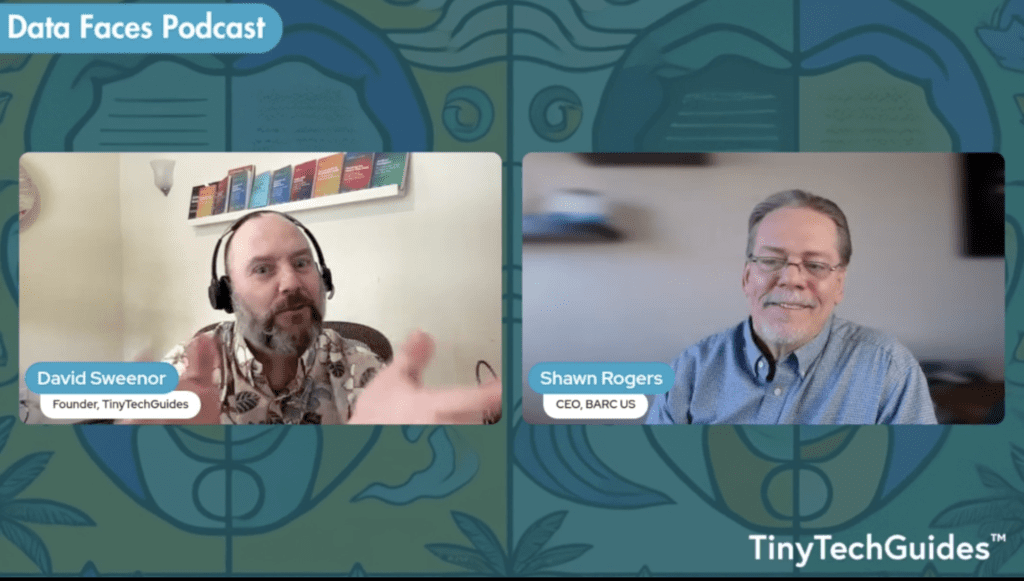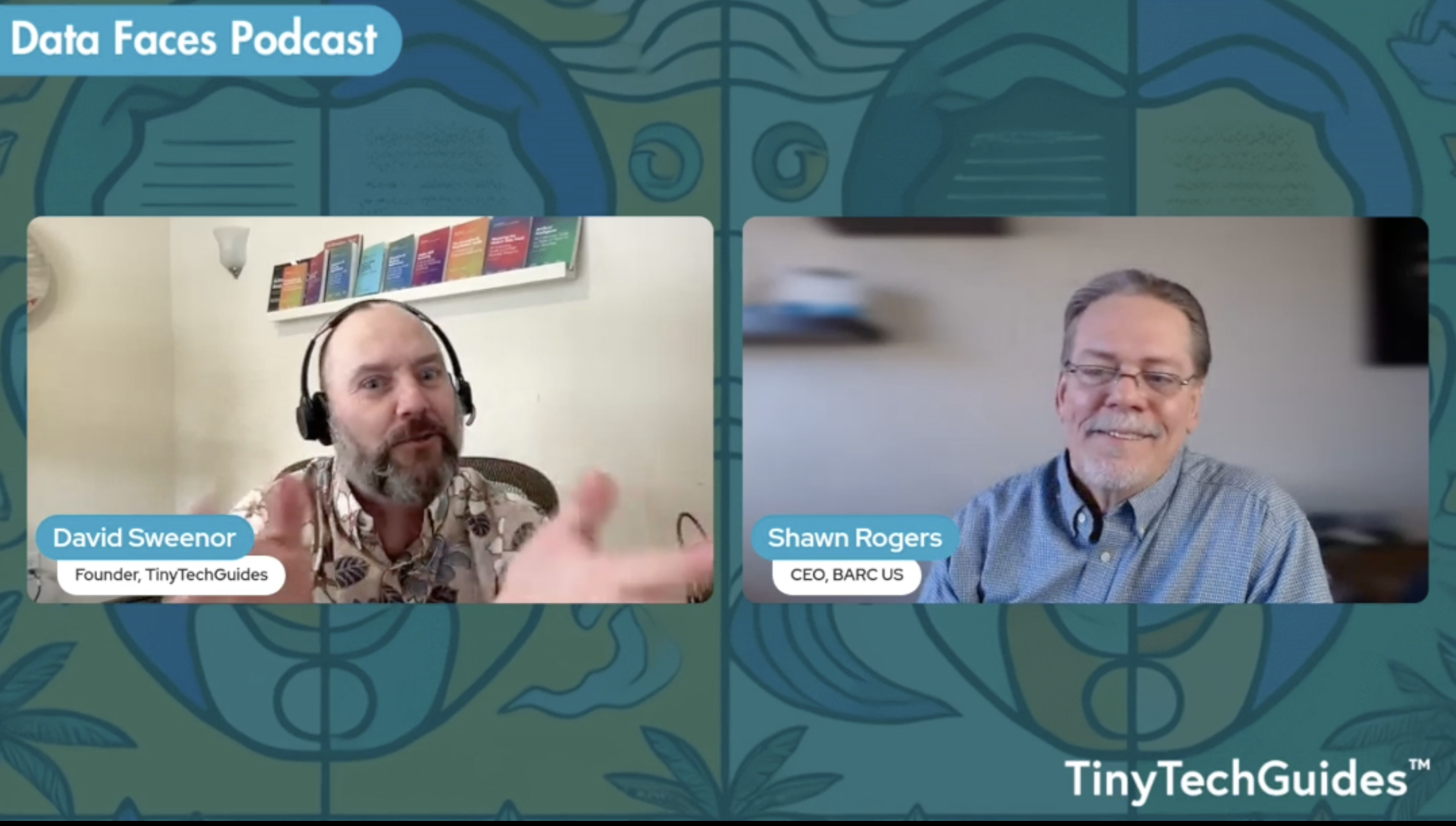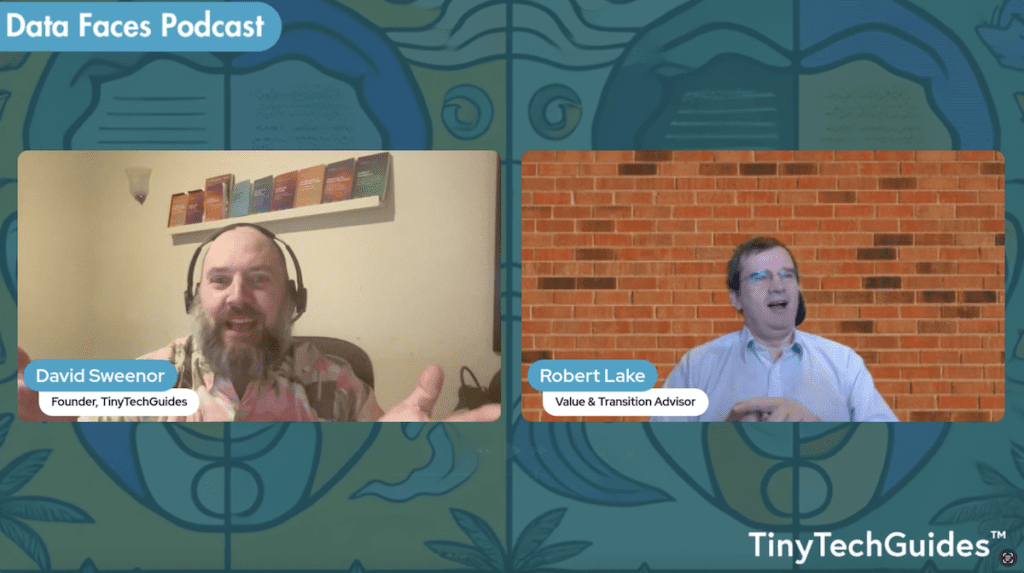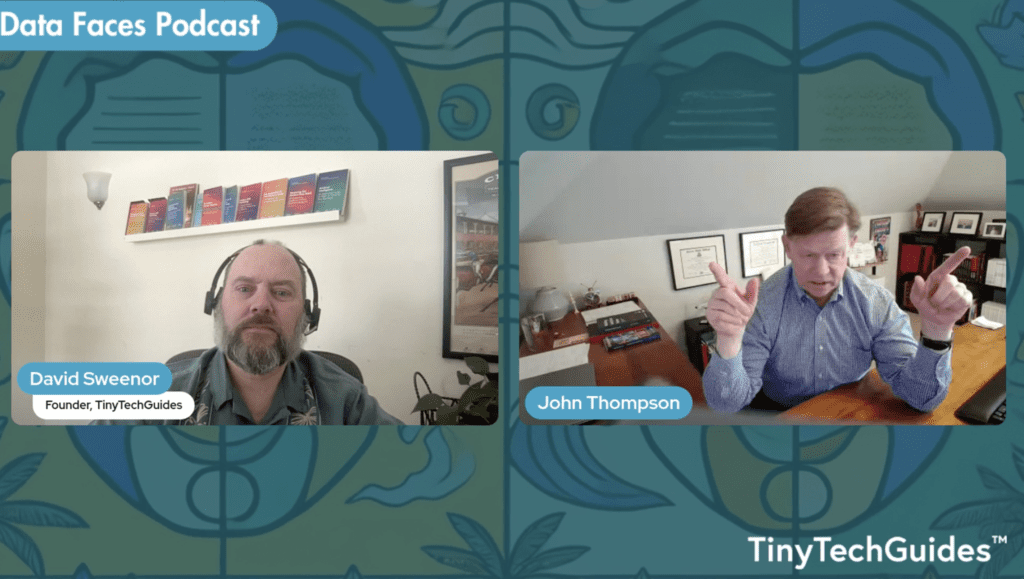
Watch and listen now on YouTube | Spotify | Apple Podcasts
New BARC research exposes the gap between board-level enthusiasm and operational reality in technology implementation.
Shawn Rogers leads BARC US with over twenty years of analyzing data and analytics trends. His team of 24 analysts studies what works – and what doesn’t – in enterprise technology adoption. Rogers advises Fortune 500 companies and speaks regularly at major industry events.
Why This Matters Now
Boards write bigger checks for technology than ever before. But most companies still struggle with implementation. BARC’s research reveals why some organizations succeed while others spend without results.
Business Impact: The Difference Makers
Money flows from the top now. BARC found 37% of boards directly fund technology competitiveness programs – a shift from traditional bottom-up IT spending.
What changed? Board members finally understand the business case. Rogers notes, “This is the first year at a holiday party that I got asked about AI. Up until then, all my relatives thought I was in the computer industry, and I fixed laptops for a living.”
Yet only 20% of companies meet BARC’s maturity benchmarks. These leaders:
- Connect projects to existing KPIs
- Build on operational strengths
- Set realistic timelines
The rest chase technology without clear business goals. Rogers advises: “Take a deep breath. You didn’t miss the train.”
Data Quality: Reality Check
No retailer stocks shelves without tracking inventory. Yet most organizations can’t answer basic questions about their information assets.
BARC’s research shows data quality dominates all other challenges. As Rogers states, “The top three answers were data quality, data quality, and data quality – and it was so far ahead of the other challenges.”
The numbers:
- Error rates range from 2-80% by domain
- Basic tasks fail 30% of the time
- Finance requires near-perfect accuracy
Information lives everywhere. Marketing owns 40% of documents, sales has 27%, nobody tracks the rest. One company couldn’t update product information in their models because they lacked basic document management.
Result? Hidden costs mount:
- Duplicate data across departments
- Outdated versions persist
- No audit trail for decisions
Rogers puts it clearly: “If you talk to finance professionals, they aren’t excited because hallucination is not acceptable at any level.”
Workforce Strategy: Follow the Leaders
Market leaders focus on existing talent. BARC’s research reveals a clear pattern: upskill first, hire second, partner third.
What does “upskill” mean? Rogers identifies key areas:
- Data pipeline automation
- Application development
- Statistical foundations
- Data stewardship
“You need to be the person that walks into the next meeting and says, ‘I think I could help us with our data stewardship chores,'” Rogers explains.
The C-suite often misses ground reality. While 84% of companies use automated coding tools, many executives don’t know about this usage. This disconnect creates problems:
- Training investments miss the mark
- Skill assessments stay inaccurate
- Resources go to the wrong places
Consider a professional sports team. Veterans understand the game, rookies bring new skills. But no team wins by constant trades – you build your core roster.
Model Performance: Real Numbers
Let’s talk accuracy. BARC’s research shows error rates around 36% for basic tasks. Some domains see 80% failure rates.
Different units have different tolerances:
- Analytics teams accept improvement over manual work
- Finance requires perfection
- Marketing tolerates creative variance
“If you talk to an analytic professional, they’re doing cartwheels down the hallways,” Rogers observes. “If you talk to finance professionals, they aren’t excited at all.”
Cost shapes these choices. Basic capabilities get cheaper, but high accuracy costs money. Companies choose:
- Higher error rates for low-risk tasks
- Premium prices for critical functions
- Mixed approaches based on needs
Think manufacturing quality control. Entertainment systems can have bugs. Brakes can’t fail. Period.
What Market Leaders Do Differently
Top companies treat technology investments like financial portfolios – they diversify risk, focus on fundamentals, and avoid market fads. BARC’s research reveals their playbook.
Start with what works. “The smartest companies look to augment what they already have, not reinvent everything,” Rogers notes. They:
- Connect projects to measurable KPIs
- Build on operational strengths
- Test small, scale what works
Data management separates winners from the pack. “If the quality isn’t good, the output isn’t good,” Rogers states. Leading organizations:
- Treat data like a balance sheet item
- Assign clear ownership
- Run regular quality audits
- Document update processes
Cost control matters more than speed. While the technology shows promise, it “isn’t ready for prime time” in many cases. Market leaders:
- Balance stability with innovation
- Focus on ROI-driven projects
- Track performance metrics
- Adjust based on results
Consider a restaurant analogy. No chef replaces their entire menu at once. They test new dishes while keeping customer favorites. Technology adoption works the same way.
Actions for Business Leaders: Next 90 Days
Start with basics, not moonshots. The current market lets you move deliberately while still gaining advantages. Here’s your quarterly checklist:
Know your data:
- Map information flows
- Identify ownership gaps
- Run quality audits
- Document update processes
Rogers puts it plainly: “All those data management chores customers ignored for years? They matter now.”
Set measurable goals:
- Pick one business problem you can track
- Build modular solutions
- Test with existing data
- Scale what works
“If I were looking for architecture today,” Rogers advises, “I’d focus on systems that let you plug in what you need.”
The Next 24 Months: Market Signals to Watch
The market splits into three paths over the next two years. Here’s what to monitor:
Technology costs decrease:
- Processing expenses drop
- Implementation gets simpler
- Specialized solutions emerge
As Rogers predicts: “Things will get cheaper, quick. I wouldn’t say commoditized yet, but we’re heading there.”
Market consolidation accelerates:
- Domain-specific solutions gain traction
- 32% of companies already use specialized models
- Open-source options expand
The workforce adapts:
- Skill premiums adjust
- Training costs normalize
- New roles emerge from existing jobs
Performance metrics mature:
- Accuracy benchmarks stabilize
- Cost per decision metrics emerge
- ROI calculations standardize
Rogers offers perspective: “Eventually it’ll be more accurate, but you’ll still need to check its work.”
Think of this like weather forecasting. Short-term predictions help you plan, but you need flexible strategies for longer horizons. Market leaders prepare for multiple scenarios while focusing on fundamentals.
Bottom Line
Success in technology adoption isn’t about speed to market. It’s about building strong data foundations, developing your team’s capabilities, and making measured progress toward clear business goals. As Rogers reminds us, you haven’t missed anything. But you do need to start with the basics.
Check out some of the latest BARC research at: https://barc.com/research/data-architecture-ai-innovation/
Selected Transcript Highlights
[00:00] Opening remarks and introduction of Shawn Rogers, CEO of BARC US.
[02:47] On market reality: “It’s totally both. The hysteria and the chaos is a big part of it… You can kind of leverage it. When I talk to end users quite often, the first questions are very like, what do we do? Where do we start?”
[05:39] On surprising trends: “The scope of data being used has grown really quickly over the last 24 months. Everybody started with their relational data… and they went after structured data.”
[08:08] On adoption patterns: “When you and I were in the market, living through the big data craze… it wasn’t as heavily adopted at the C level. It’s really top down adoption right now.”
[11:51] On ROI and leadership: “About 20% of companies that are actively pursuing AI are checking enough of the boxes for maturity to be seen as leaders.”
[14:35] On data quality challenges: “The top three answers were data quality, data quality and data quality, and it was so far ahead of the other challenges.”
[20:45] On workforce development: “Most employers are looking to train and upskill their staff, but they are also looking at hiring key individuals.”
[27:30] On model accuracy: “If the quality ain’t good, the AI ain’t good… without a doubt, it’s not my opinion. It’s a research fact.”
[34:19] On responsible implementation: “Only three to 5% of the people that take our surveys… have a responsible AI strategy.”[41:45] Concluding thoughts on market evolution: “I think faster, cheaper models and domain language models are going to be much more prevalent… but you still need to check its work.”



